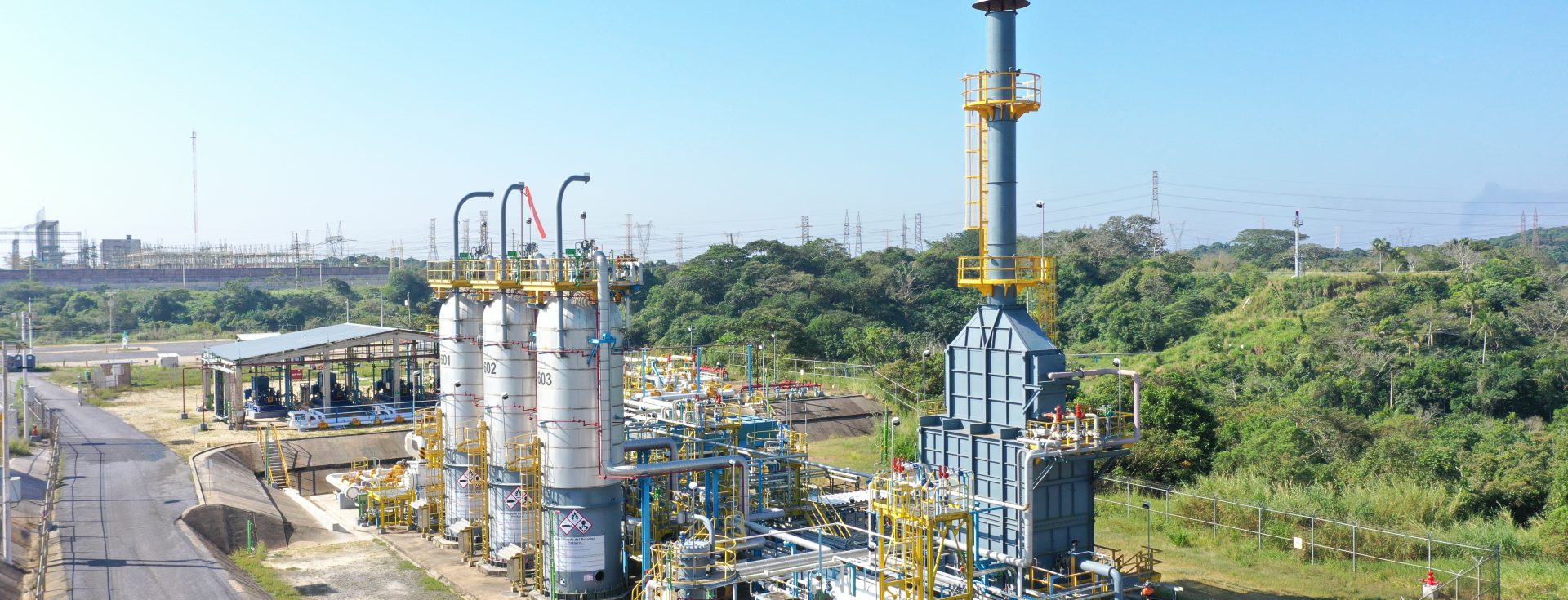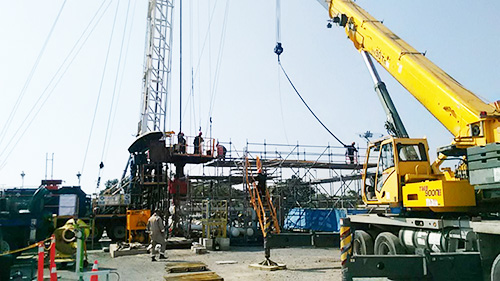Friday 3 March 2023 - Event


Author
Capucine Courault, Principal Geologist – Underground storage & hydrogen storage, CCS, Geostock Sandia LLC
Following used industry standard and guidance from existing regulation, the work-over on Shalapa Cavern 206, after 5 years of operation, has demonstrated that the 10 3/4″ tubing and the 16” production casing are in overall good condition.
SHALAPA FACILITIES
The Shalapa storage facility is located near Coatzacoalcos, Mexico, approximately 600 km southeast of Mexico City. This facility is operated by Almacenamientos Subterraneos del Sureste (ASSE) with the dedicated support of Geostock Operación for the cavern operation and is used as an LPG storage and transit facility by PEMEX.
The Cavern 206 was created within the Tuzandépetl salt structure between 2013 and 2015 and placed in LPG storage service in 2017.
In the absence of dedicated regulation in Mexico for underground hydrocarbon storage in salt, ASSE and Geostock Operación proactively use industry standard and guidance from existing regulation from other countries for the operations and integrity monitoring program.
As part of this monitoring plan, a workover was performed in May-June 2022 after 5 years of operation. This workover included:
The technical support for this workover was provided by a Project Team from Geostock Operación (Shalapa site, Mexico), Geostock Sandia (Houston, USA), and Geostock SAS (France). The Project Team was in charge of the workover detailed program, technical support to ASSE for the procurement of service companies and equipment, supervision of the workover operation, and reports of the workover operation, casing inspection, and sonar measurements.

Surface equipment dismantling prior to workover
An initial study was performed 2021 to identify the best approach for this workover in order to minimize disturbance to the surface equipment during the workover. It was determined that a workover rig with the addition of scaffolds was the best option.
A Hazid review was carried out in April 2022. Upon completion of this Hazid, several additional procedures were prepared such as a procedure for transit and parking for contractors and visitors, an emergency response plan prepared in collaboration with the rig supplier, and medical screening to lower risk associated with Covid 19. During the operation, there was no Lost Time Incident, and one near miss was recorded.
Prior to the workover, Geostock Operación was in charge of preparing the platform, coordinating with ASSE the emptying process of the cavern, and disconnecting and moving surface equipment as needed.

Set up equipment prior to workover
Upon set up of the rig and platform, a BOP was installed for safety in case some amount of product would still be present in the cavern. The operations consisted in removing the 2 3/8” dilution tubing, running a dummy and brush in the 10 3/8” tubing, running inspections logs (MFC, MTD, and USIT), running a sonar survey, running back in hole a 2 7/8” dilution tubing, removing the BOP, and installing back the wellhead. The rig and scaffolds were then removed and Geostock Operación was in charge of reinstalling the wellpad equipment.
The inspection showed that the 10 3/4″ tubing and the 16” production casing are in overall good condition.

BOP installation

Removal 2 3-8” tubing

Running 2 7-8” tubing into the hole

Brush ran in 10 3-4
The sonar survey indicated an LPG storage capacity of approximately 470 000 m3 (nearly 3 million bbls) with an increase in size compared to five years ago. It was recommended to ensure to use brine at high saturation level for future operations to limit future cavern growth.
Upon results from this inspection, it was recommended to perform the next inspection in 5 years.
The incurred cost of the operations was successfully within the planned budget, approximately 15% lower than what was planned.

Running sonar survey